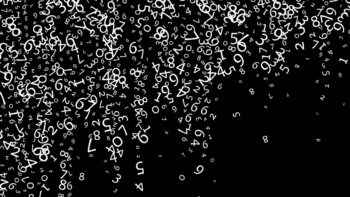More than 10,000 computer-game enthusiasts have helped physicists in Denmark to design better protocols for running quantum computers. The researchers at Aarhus University created a suite of games called Quantum Moves, which mimic operations in a hypothetical quantum computer. When faced with challenges that resemble real design problems, the gamers came up with better solutions than those calculated by the physicists.
Citizen science uses the brainpower of ordinary people to solve very difficult scientific problems. Successful projects tend to use innate human skills such as pattern recognition and game playing – tasks that people are often much better at than even the most powerful computers. Popular projects include Galaxy Zoo, which relies on volunteers to classify the shapes of galaxies in telescope images, and Foldit, which makes a game out of the fiendishly difficult problem of predicting how proteins fold.
Now, Jacob Sherson and colleagues in Aarhus have created Quantum Moves, which uses citizen science to help design a quantum computer that stores and processes quantum bits (qubits) of information in an array of atoms trapped in an optical lattice.
Quantum speed limit
A fundamental challenge facing anyone trying to build a quantum computer is that qubits are fragile and will lose their quantum nature (coherence) as they interact with their surroundings. This problem can be overcome by performing the quantum computation in a much shorter time than it takes for the coherence to be lost. This means that calculations must be done as quickly and efficiently as possible. An added complication is the “quantum speed limit”, which puts a fundamental limit on how fast a “perfect” quantum computation can be done – any faster, and Heisenberg’s uncertainty principle starts to degrade the result.
We are downloading our common intuition to the computer
Jacob Sherson, Aarhus University
These complications make it extremely difficult to work out the best way to solve a problem on a quantum computer. “We are at the borderline of what we as humans can understand when faced with the problems of quantum physics,” says Sherson, who wants to design a quantum computer based on atoms trapped in an optical lattice of potential wells. A key challenge in designing such a device is how to move the atoms about the lattice quickly and efficiently without destroying their coherence.
This is simulated in a Quantum Moves game called BringHomeWater, which challenges players to use optical tweezers to pluck an atom from one lattice site and move it to another site. The atom is represented as a quantum-mechanical wavefunction that lies like a pool of water at the bottom of a potential-energy well at the lattice site. The optical tweezers are represented as a second potential well that can be moved towards the lattice site so that the “water” can flow into the tweezers and then be shifted to a second lattice site (see video).
The faster the water is moved, the easier it is to spill it, and the object of the game is to find the quickest way of moving the water without spilling any – which is analogous to optimizing atom movements in a quantum computer.
Clever humans
Sherson’s team has found that the humans are much better than current computer algorithms at devising optimal ways of moving atoms. Indeed, the human strategies allowed the physicists to place new lower bounds on the quantum speed limit.
He and his colleagues used data gleaned from how more than 10,000 people played Quantum Moves to create graphical representations of how people solve problems. “The players solve a very complex problem by creating simple strategies,” explains Sherson. “Players automatically search for a solution that intuitively feels right.” This is unlike a computer, which undertakes a methodical search through available options to look for the base game plan.
Indeed, Sherson believes that the insights gleaned from Quantum Moves could be used to boost the performance of computer algorithms that design quantum-computing protocols. “If we can teach computers to recognize these good solutions, calculations will be much faster,” he says. “In a sense, we are downloading our common intuition to the computer.”
As well as fulfilling an important role in scientific research, Sherson believes that Quantum Moves can also give the public important insights into the strange world of quantum physics. “By turning science into games, anyone can do research in quantum physics,” he says. “We have shown that games break down the barriers between quantum physicists and people of all backgrounds, providing phenomenal insights into state-of-the-art research.”
The games are available to play at ScienceAtHome and the research is described in Nature.



